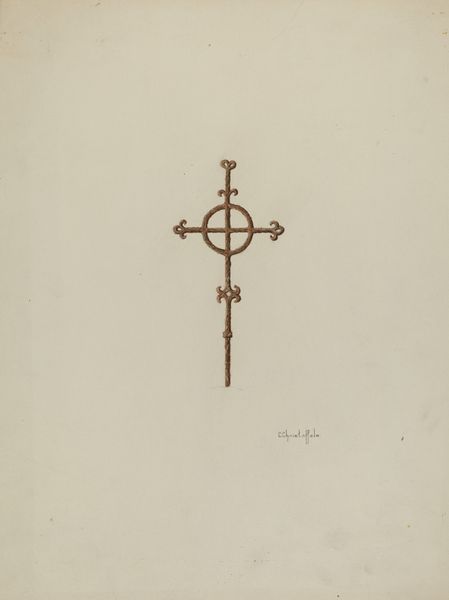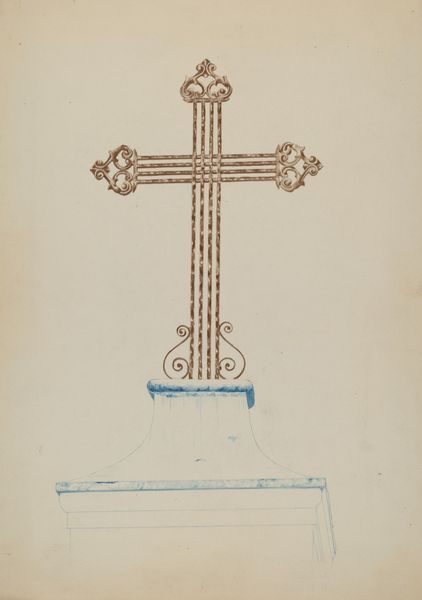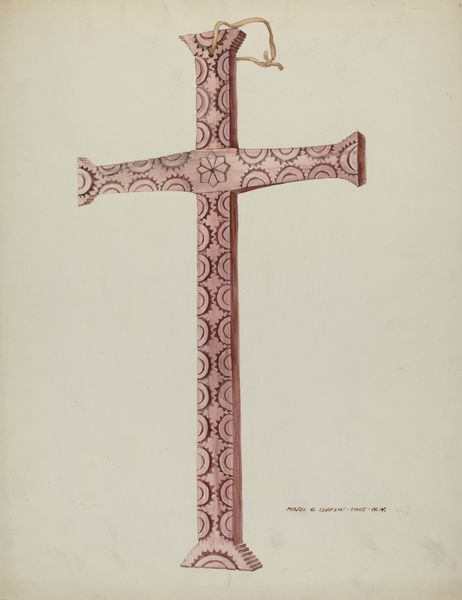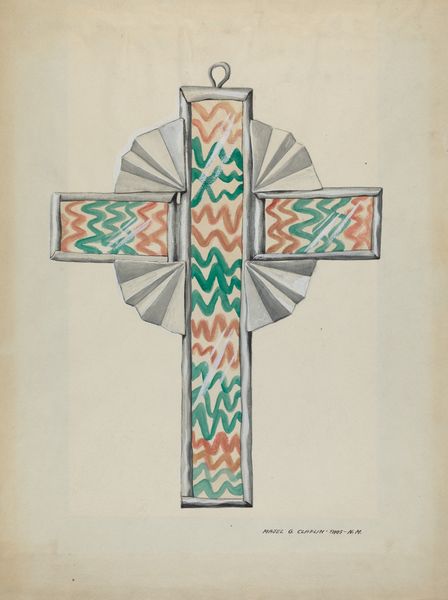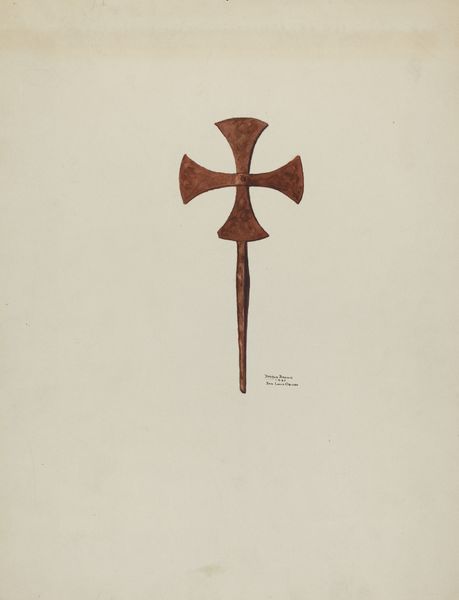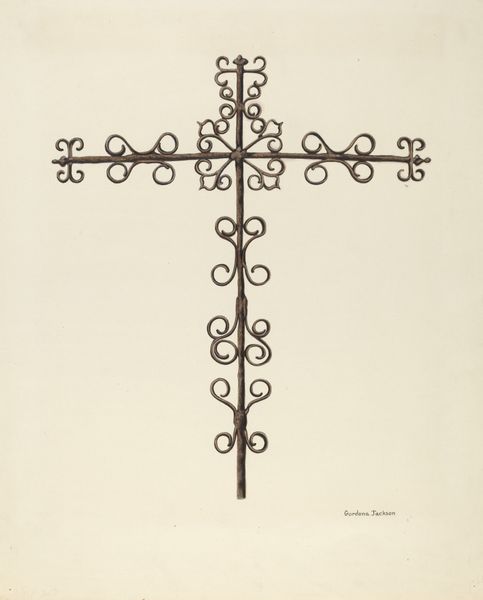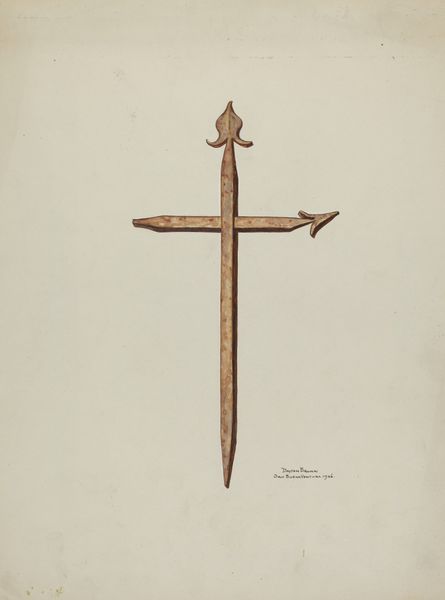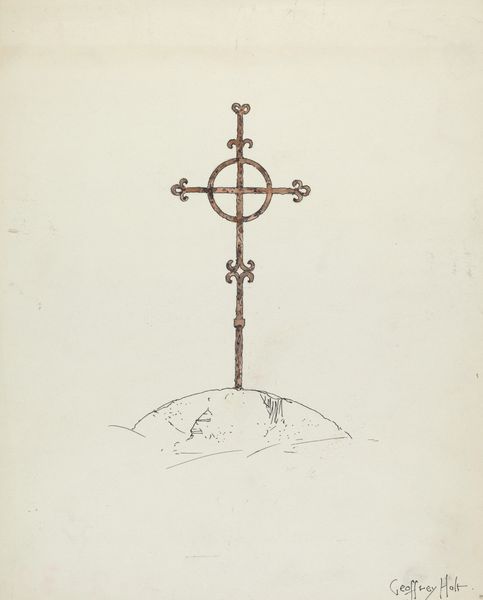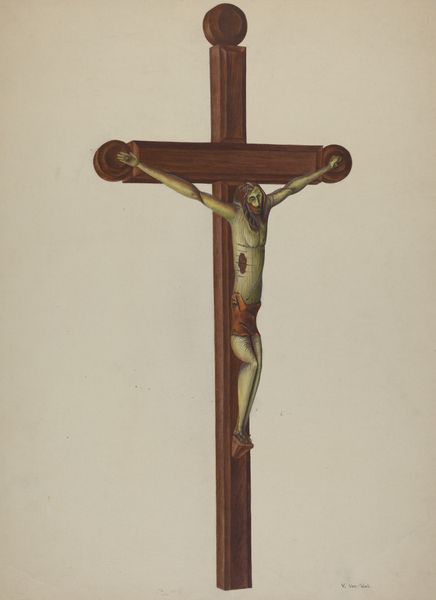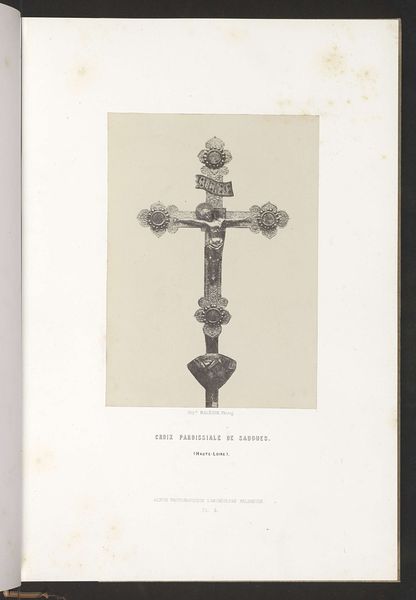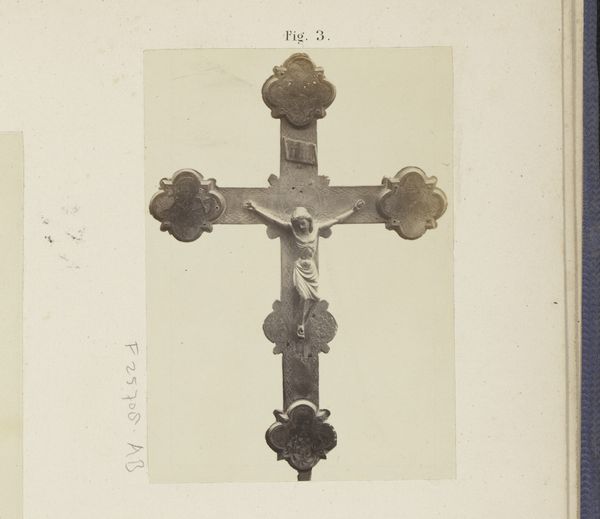
drawing, watercolor
#
drawing
#
water colours
#
watercolor
#
watercolour illustration
#
history-painting
#
watercolor
Dimensions: overall: 35.7 x 28 cm (14 1/16 x 11 in.) Original IAD Object: Scale: 1/6. Overall height: 8'4"
Copyright: National Gallery of Art: CC0 1.0
Editor: Here we have William Hoffman’s "Processional Cross," created around 1936, a watercolour drawing. It feels so understated and simple, yet carries such weighty symbolism. How do you interpret this work, especially given the time it was created? Curator: That's a great observation. When looking at the Processional Cross through an activist lens, I’m immediately drawn to the power dynamics embedded within religious iconography, particularly during the interwar period. Think about the rise of fascism and the ways in which symbols, including religious ones, were manipulated to consolidate power. Do you see the starkness of the cross itself, its unadorned quality beyond the basic embellishments? Editor: Yes, it's not overly ornate. It's quite simple in its form. Curator: Exactly. And this simplicity, painted in watercolor – a humble medium – speaks volumes. It pushes us to consider: whose story is being told? Was it for a grand cathedral, a display of wealth, or perhaps for a smaller, more marginalized community finding solace in faith amidst growing social unrest? Think about the socio-economic disparities of the time. Editor: So, it's not just about the religious symbolism but about the potential use and context? Curator: Precisely. Consider the history-painting tag applied to the artwork, as a moment that can give context. And I ask you: could Hoffman be critiquing the establishment's appropriation of religious symbols or reclaiming it for the people? It really begs us to investigate the intentions behind this cross's creation and intended audience. Editor: That's fascinating. I never thought about it that way, how even religious symbols can be viewed through the lens of power and resistance. Curator: Art constantly dialogues with its time. Analyzing its symbols within that framework allows us to unpack hidden narratives and foster critical engagement with history. Editor: I’ll definitely be considering historical and social context more closely from now on! Curator: Fantastic, I'm glad this reflection offered an illuminating perspective of the painting.
Comments
No comments
Be the first to comment and join the conversation on the ultimate creative platform.
